Toledo battles lead exposure


UToledo helps with lead screenings, education
TOLEDO – In October 2020, Toledo City Council made a commitment to eradicate harmful lead exposure to all tenants, especially children, by passing an ordinance requiring all rental properties of 1-4 units and daycare facilities constructed prior to 1978 to be lead-safe certified.
The effects of elevated blood levels in children, particularly those six years old and younger, are well documented. It often results in behavioral issues, like hyperactivity and angry outbursts, and it also prevents children from progressing in their studies at the same rate as their peers.
While the lead-safe ordinance (TMC 1760) is an important first step in preventing children from lead exposure, putting it into action has proven to be a long road. The ordinance has experienced legal disputes: In 2022, a suit was filed against the city by landlord Charmarlyn Strong, resulting in an injunction. A judge did rule in favor of the ordinance last year, but the lawsuit is being appealed. Until the injunction is lifted, enforcement of the ordinance is on hold.
The ordinance created deadlines for rental properties and daycare facilities to have received their certifications, and while many have, the hold up in court has made it impossible to penalize those who haven’t complied. If the injunction is lifted, fines and penalties — even a first-degree misdemeanor — could be applied to those who haven’t gone through the certification process.
Monica Smith, lead coordinator for the City of Toledo, says that the compliance dates (many of which have long since past), are prioritized in order of lead risk.
“According to the CDC Center for Disease Control, every zip code in the city is considered high risk for land poisoning,” Smith said. “However, we know that some are higher than others. So, when the decision was made to create that timeline in regards to the compliance dates, that was based off the number of children who had elevated lead levels at that time. We prioritized the areas where the rates were higher.”
Steps for rental owners
The Lead Safe Toledo website makes it easy for Toledo renters and daycare facilities to become certified, but Smith has some tips to emphasize.
- Ensure your property has been registered with the Lucas County auditor’s office. It needs to be registered on the rental registry.
- Visit toledoleadsafe.com to learn how to clean the property prior to inspection.
- Identify the clearance technician or the risk assessor you’re going to hire to do your clearance examination on your property. Those are also listed on the Toledo Lead Safe website.
- Once you have hired one of these independent contractors to perform a clearance exam and received their report, go to the Toledo Lead Safe website to apply for your certificate ($25 fee).
All of these steps have links and resources on the website, including what your compliance date is for your property’s zip code.
Toledo – we have a problem
Teachers, parents and concerned community members have to remain diligent in advocating for kids facing health risks that could impact their lives well into adulthood.
Dr. Marilynne Wood, a retired professor of nursing at the University of Toledo, began screening children for lead poisoning over a decade ago and has since tested well over 1,000 children for exposure. Along with screenings and home visits, Wood leads educational initiatives at health fairs, churches and parent-teacher organizations, with the hope of raising awareness and making real change for these children.
Through these screenings she’s conducted with UT students from the College of Medicine and College of Nursing, Wood found that “we have a real issue in Toledo. Some of our areas, especially in the North End in Leverette, and some of our elementaries around there, when the children were screened, 70 percent of the children at Leverette were elevated. Ninety percent of our housing there was built before 1978, many of those homes even before 1950.”
1978 is when lead-based paint became illegal and, since then, there has been a long, slow movement toward dealing with the consequences it continues to leave in its hazardous wake. Central Toledo is particularly affected, and Wood has found a pervasive presence of lead in certain zip codes. She has served on the executive board of the Lead Poisoning Prevention Coalition for many years as well.

“I don’t see a trend of decrease over the city,” she points out. “Some of the zip codes are so predictable: 43605, 43607, 43608, 43609. Our Old South End. I’d like to target the schools in these areas because I know we need to do so many interventions there.”
Identifying lead poisoning and what you can do
The problem with identifying lead poisoning in children is that the symptoms are often not apparent until the child has been exposed for some time.
“A lot of parents don’t even know that this could be an issue and why their child isn’t doing very well in school,” says Wood, adding that it often becomes more obvious in the third grade. Falling behind even this early on can prevent a child from reaching their potential for years to come, and there is even evidence that lead poisoning correlates with rates of suspension in high school, Wood explains.
Once your child has been tested for lead poisoning, there are steps you can take to limit their exposure:
- Diminish the effects by making sure your child stays full (more lead is absorbed into the bloodstream on an empty stomach)
- Put them on a multivitamin and nutritious diet
- Pregnant moms-to-be should be mindful of their exposure to lead to maintain healthy fetal development
- Environmentally, you should have an assessor come to your home to see where the problem lies so that it can be addressed. Toledo Lucas County Health Department has resources to help you with finding an assessor and testing your child for lead.
- There might be peeling paint in the interior and/or exterior of the home, and lead could be present in the soil, contaminating it and any food you try to grow there. If this is the case, you should opt for elevated vegetable gardens to avoid these contaminants.
- The City of Toledo’s Department of Neighborhoods can also point residents, daycare owners, and landlords in the direction of funding through grants. All changes to the property may very well be covered for you as the homeowner, or for your landlord if you are renting.
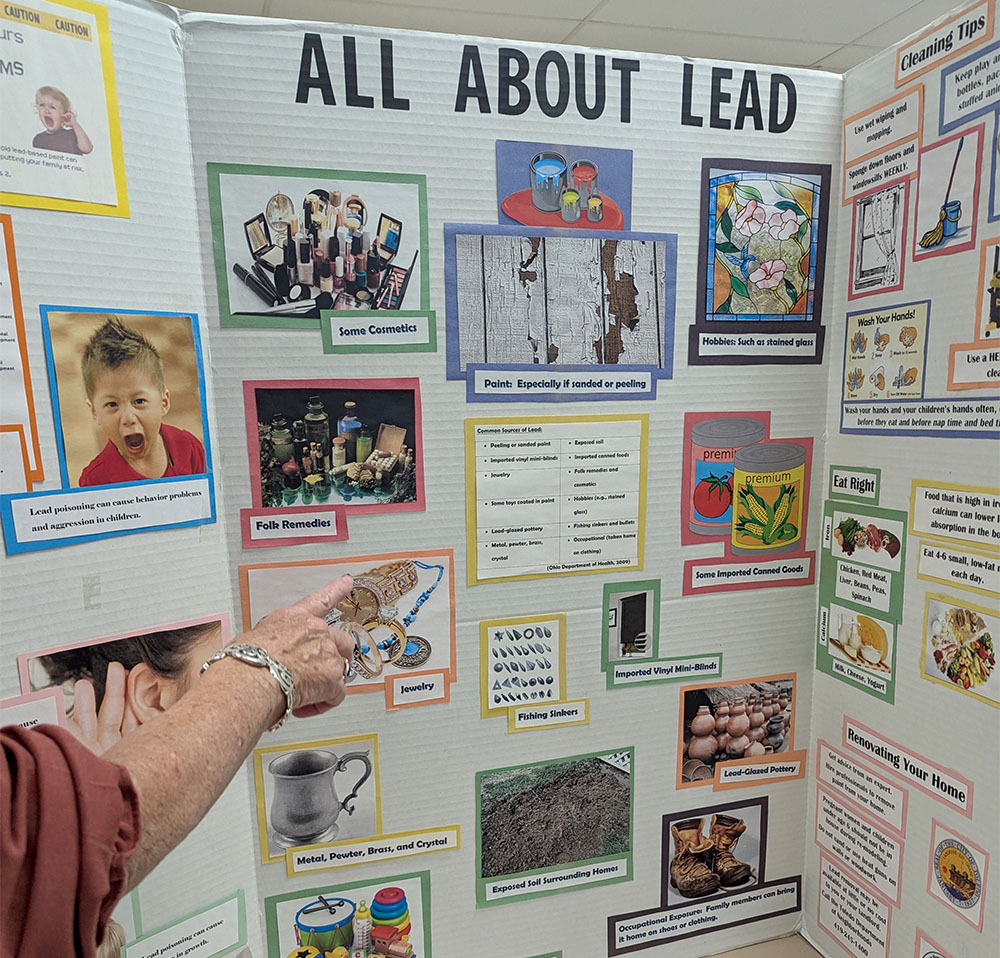

In the meantime…
Even though enforcement of the lead ordinance is on hold, many owners of rental properties have taken the initiative to register their properties, go through any necessary lead abatement, and receive their certifications as lead safe properties.
For families who are living in a home with lead, there are still measures they can take to keep themselves as safe as possible from lead exposure.
Make sure your home and the daycare you send your child to are safe. If you work in an industry where you are exposed to lead — welding, for instance — avoid letting your child near you until you’ve changed your clothes. It can be difficult to remember these precautions, but the consequences of complacency are dire.
“If there’s a little one — a toddler, a child under six — in the home, those are the ones we’re most worried about because their brains are developing, and that’s the time for the most damage,” Dr. Wood said.
“I think on their list of things that are important [to many parents], it’s food and shelter and not worrying about what their [child’s] lead level is. And I think it’s such an important thing because it’s something we can do something about through education. These kids are completely dependent on where they live, and we need to help them.”
To seek testing for lead poisoning or to have your home inspected for lead, contact the Toledo Lucas County Health Department at 419-213-4100.
The miracle of medicine & friendship


The moral of this story: ‘Get your cancer screenings.’
By Cheryl Hardy-Dillin
I believe in the magic of Christmas – maybe even a miracle.
Let me tell you a story of about my bestie, Cathie … and we have quite the life story to tell. Epic, actually.
Last year, Cathie was diagnosed with Stage IV metastatic cancer. With strength and grace, she and her family have fought through multiple rounds of tortuous chemotherapy and radiation, and battled with the emotional and physical toll that this wicked disease takes.


But Cat was a strong advocate for herself in the toughest and most Cathie-way ever. She never allowed the doctors to be good enough; it was always a challenge to them – what else can be done?
Because of her persistence, mental toughness and demanding the best for her own health, Cathie was referred to a revolutionary program at the Cleveland Clinic that allows patients with her EXACT cancer circumstances to get a liver transplant. This procedure is expected to cure her of cancer.
In January, Cathie is set for final testing and scheduling of her liver transplant – a procedure in which a donor match gives her a lobe of their liver. The liver is regenerative, so the lobe will grow into a full and healthy liver.
I am Cathie’s live liver donor match.
The tale of how we met
I have been friends with Cathie for more than half of my life; it’s hard to remember life without Catherine, Cathie, Cat, Chickie …. Catherine and I met at a Toledo Home Remodelers Association meeting almost 30 years ago. I had just started my agency and was trying to build relationships and get business. On this night, the THRA had Miss Ohio in attendance and the room was packed. However, other than Miss Ohio and me, there were maybe one or two women.
After the painful meeting and listening to Miss Ohio sing, I grabbed a bar seat at the usual after-meeting watering hole in hopes of finally doing some real networking. On the other end of the bar was a confident and bodacious young woman who was also recalling the pretty unsatisfying meeting. We made eye contact and did that woman thing, where you say 1,000 words with your eyes, and even though you don’t know each other, you understand. And that was it: We were best friends.
Cat is the one who gave me a style look because she didn’t think my overalls were as cute as I did. So, if you like my style, thank Cathie. It’s her fault I wear anything other than Garanimals.
Cat is the one who fixed me fresh strawberry daiquiris with a powdered sugar rim because I ‘didn’t really drink much and didn’t like beer, wine or booze.’ I am now a wine, gin and tequila girl – all compliments of Cathie’s influence.
I have only one superpower in life and that is my ability to believe in other people and convince them, through my belief, to believe in themselves. I learned that from Cathie, too. It’s what she’s done for me over and over and over again.
I remember a young Cathie and her love, Wayne, bouncing over a hill and proudly announcing their engagement, which led to marriage, and what a wedding it was. I was the maid of honor and made sure my toast would be remembered.
I frequently tell the story of Cathie’s 80/25 percent rule, a rule that made absolutely no sense until she proclaimed, martini in hand, that any man not giving more than 100 percent wasn’t worth even a look from me.
Then there was the time she strode into my office with the air and confidence of a famous actress, threw a piece of paper on my desk and announced, “You’re going to win this national marketing competition for us, and we’re going to have THE BEST time.” I did, and off we went to Italy on an all-expenses paid trip.
And we did have THE BEST time. We danced on the Spanish steps, drank from the Trevi Fountain (Limoncello induced, of course), got cool Italian sunglasses, visited the Colosseum and the statue of David, took a gondola ride, drank a Bellini right where Hemingway sat and got the giggles so bad in Venice that our neighbor pounded on the wall for us to be quiet (didn’t work).
I remember when she told me she was pregnant for the first time … and the second. When she and Wayne bought their first house and then built their dream house. I also cherish that they helped me buy my first home.
But the story I remember most was just a couple months ago.
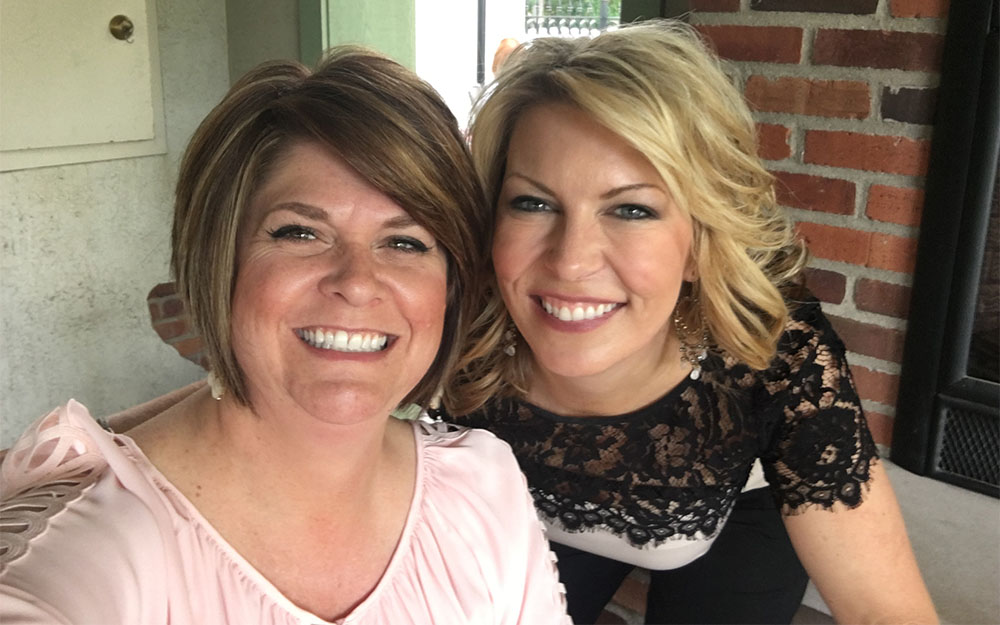

The day everything changed
I was pulling into a parking lot, running late, when Cat called me. I answered, “Hey, I’m walking into the FBI. Can I call you later?” Cat paused but chuckled, “Of course you are. Talk to you later.”
The evening was amazing. I had great conversations with the special agent in charge (SAC) and the assistant special agent in charge. The SAC coined me – a real wow moment that I tried to act cool about, but I really wanted to jump up on the table and show everyone my cool Special Agent in Charge coin.
On my way home, I hit cruise control and happily dialed up Chickie. I loved Chickie talks!
“What’s up, Cat?!” I smiled.
In true Cat fashion, she said, “Tell me all about your FBI night, Chicky.” (She’s Chickie and I’m Chicky. Aunt Chicky to everyone in her family, actually.)
I proudly told her about my SAC coin and how much it meant to me, thankful that my bestie was the first to hear my special news.
She then offered mildly, “Remember how you jumped out of an airplane with me when I turned 30?”
Yeeeeeeesssssss. In my head I had absolutely no idea where this was going.
“Remember how you ran a half marathon with me when I turned 40?”
Um, yesssssss. She only gave me like two weeks to prepare. It rained and was miserable. What torture was she preparing me for?
“Well, I picked something a little harder for my 50th.”
“You did!?” (We cannot print what was going through my mind.)
“Yep, this year I’m going to fight cancer.”
That was not it. That was NOT what was going through my mind. That was NOT what I wanted to hear. I wanted to hang up, call back and find out I was punked or that this voice that sounded like my best friend was a deep fake. Please, anything but what I had just heard.
People tell me all the time something I already know, that my relationship with Cathie is special – the once-in-a-lifetime kind of friend that most people only wish to have. She’s my person. My ride or die. My rock. My home base.
And with one sentence, I felt the earthquake of that special relationship rock my world. I still feel the aftershocks today.
I share this story to encourage you to make the appointments for your cancer screenings. Get your mammograms. Schedule those colonoscopies. Why? Because the worst part of this story is that if Cat had had a colonoscopy based on her family history and age, they very likely would have caught it in a preventable or treatable stage.
Today, she is fighting stage IV colon cancer that has metastasized to her liver, and next month we hope to save her with a liver.
The moral of this story is to get your screenings. Do it for your wife or your husband. Do it for your sons and daughters. Do it for your mom and dad. Do it for your best friend who will cry the most painful tears possible if you don’t.
The ultimate gift of friendship and love
And these are just some of the reason why being the donor is so special.
If this isn’t the exclamation mark on an already exceptional friendship, I don’t know what is. It has been such an honor to have a friend like Cat – and for our entire friendship, I’ve counted my lucky stars to have her in my life, always my North Star.
Now we get to do something absolutely remarkable together – because our friendship wasn’t big enough already. Let’s go cure cancer, Cat – because we can, because that’s the power of us!
BELIEVE in a Christmas miracle
Believe in miracles. Believe in hope. Believe in magic. Life is so much brighter when you believe what could be…
‘Tis the season. This year makes it so clear that the magic of Christmas isn’t wrapped beneath a tree, but wrapped up in our hearts, between the friends we consider family and the family we consider friends.
Enjoy the spirit of Christmas – it is strong in this house, and I wish you all the happiness your heart can hold and all the love and hugs your family and friends will tolerate!
Pray for a miracle for Cat, because what’s happening next is nothing short of absolutely incredible – magic in its purest form – a Christmas miracle.
The Toledo Free Press will keep you updated on this heartwarming and hopeful story of Cheryl and Cathie.
Special Report: What is LifeWise Academy?
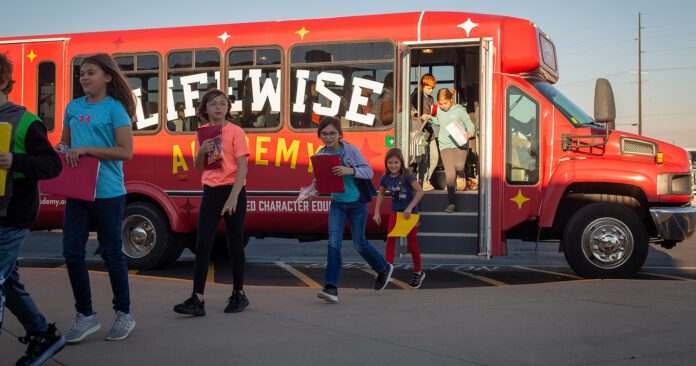

Ohio nonprofit offers Bible education during public school hours
Part 1 of a limited series about Ohio-based LifeWise Academy.
By Laurie Bertke
OHIO – If LifeWise Academy has not yet come to your public school district, the odds are good someone is currently working to introduce it in the near future.
Headquartered in Hilliard, Ohio, the nonprofit that brands itself as providing Bible education to public school students during school hours has rapidly spread from two schools in Ohio to more than 600 schools in 31 states since it launched in 2019.
Joel Penton, founder and CEO of LifeWise Academy, estimates it will soon be confirmed in 40 percent of all school districts in Ohio. The organization is working to replicate this success across the country and reports national enrollment at 36,574 students.
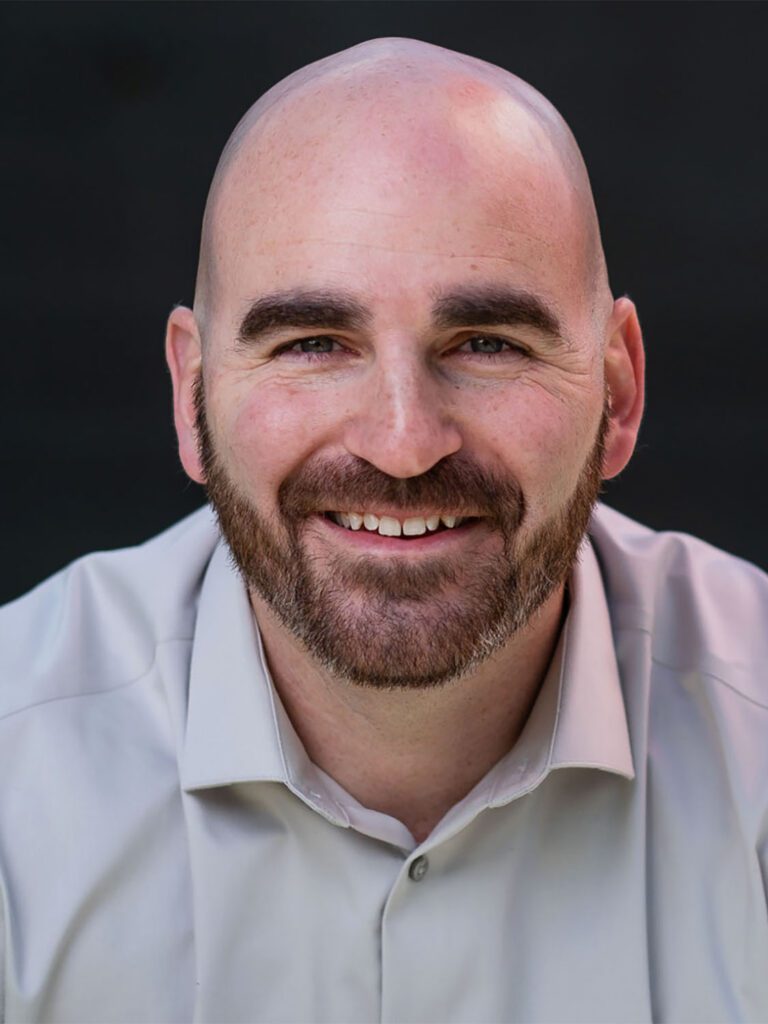

“We’re investing heavily to build out capacity to grow to bring LifeWise to the nation,” Penton stated in the Lifewise “State of the Ministry” report for November 2024.
If you are scratching your head and wondering how Bible education during the public school day is possible, here is the condensed pitch shared by proponents of LifeWise:
In 1952, the Supreme Court ruled that students can be released from public school during school hours to attend religious classes. This is known as released time for religious instruction (RTRI), and 26 states have an RTRI law on the books. Ohio passed its RTRI law (Revised Code 3313.6022) in 2014, giving local school districts the option to develop these policies.
The Supreme Court ruling stipulated that programs must meet off school property, be privately funded and can only be offered with parental permission. The Ohio law requires parents to provide written consent for participation and states that no public funds may be expended and no public school personnel may be involved in providing religious instruction.
Until recently, RTRI was used on a limited scale by small, local programs. Penton, a former OSU linebacker and self-described “nonprofit entrepreneur,” learned about one program that was operating successfully in his hometown of Van Wert and developed the idea of creating a “plug-and-play” model that could easily be replicated in other public school districts.
For supporters who want to bring school-day Bible classes to their district, LifeWise lays out a 10-step process that begins with collecting 50 signatures and raising $500. Coalitions of local churches partner with LifeWise to provide funding, classroom space and volunteers. Large, branded red buses transport the children from school to churches and other off-site locations to study the Bible during the school day.
While LifeWise Academy is not affiliated with any one Christian denomination, its website says its teachings align with “historic, orthodox Christian beliefs.” Its curriculum is based on The Gospel Project, which comes from the publishing arm (Lifeway) of the Southern Baptist Convention.
The local proliferation of LifeWise & changes to RTRI law
In the metropolitan Toledo area, the program is currently enrolling elementary students from the Anthony Wayne and Perrysburg school districts, and it is in various stages of being introduced in virtually every other district in the region.
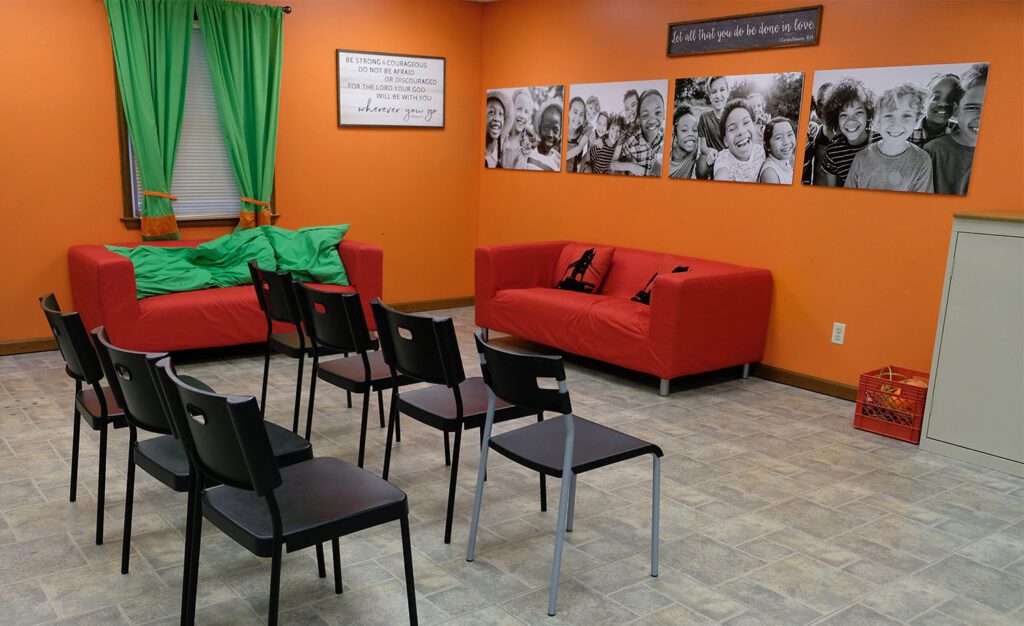

Current Ohio law says public school districts may adopt a policy that authorizes a student to be excused from school to attend an RTRI program. But that is soon expected to change, as state legislators passed a bill during the lame duck session this month that would make adopting an RTRI policy a requirement for all public school districts.
Gov. Mike DeWine is expected to sign House Bill 8 into law before the end of the year, clearing the way for programs like LifeWise to start up in any district with relatively few barriers. When similar legislation passed in Indiana, the number of LifeWise programs tripled.


Rachel Coyle, policy director for Honesty for Ohio Education, said LifeWise representatives lobbied legislators to change the law when districts began rejecting LifeWise, or even rescinding their existing RTRI policies due to complaints and concerns about the organization.
Districts in Ohio that have rescinded RTRI programs due to issues with Lifewise include Huron, Westerville and Worthington. “There’s going to be some very angry parents in the districts where they have removed RTRI programs because they have seen them go poorly already,” said Coyle.
“Right now school boards and parents have the ability to determine that this is not a good fit for their district,” she added. “If passed, the law would require every school district to allow religious release programs in some capacity.”
In northwest Ohio, public school boards in Bowling Green and Sylvania have already blocked LifeWise Academy from entering their districts.
LifeWise proponents presented the program to the Sylvania Schools Board of Education and requested permission to operate in the district earlier this year. The meeting drew a larger crowd than usual, and included public testimony that predominantly came from residents opposed to the program.
On March 18, the Sylvania Board of Education ultimately chose not to adopt a policy to allow release time for religious instruction. Board members cited concerns about liability, disruptions to the school day and opening the door to other programs requesting excused absences. They suggested it would be more appropriate to offer the program after school.
“It’s not about whether we’re allowing LifeWise,” said Tammy Lavalette, board president. “It’s about whether we’re allowing any religious instruction program that wants to come in. And that could be at different times of day. It could turn into an even larger disruption.”
Public schools as a “mission field”
Why doesn’t LifeWise want to offer its religious programming before or after school?
Penton has described public schools as a “mission field” and and Lifewise supporters see public schools as a place to encounter families that aren’t coming to church on Sundays. According to the Lifewise website, its vision is “To reach unchurched public school students with the gospel through a replicable released time religious instruction program.”
Coyle said several school boards in Ohio have attempted to work with LifeWise on setting up a before or after school program, to no avail.
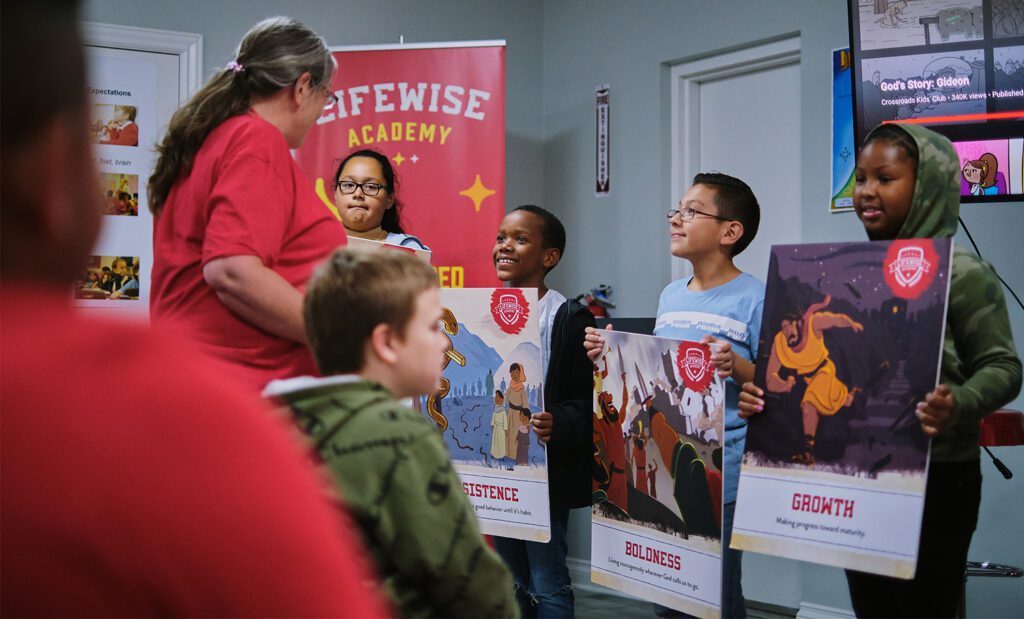

LifeWise programs are typically held during lunch and recess or during “specials” classes such as art, music, gym and library. In some Ohio districts, the number of children attending LifeWise is so large that schools have replaced a class with a study hall because so few students are left behind.
Coyle said this means students who don’t participate in LifeWise are missing out on classroom activities, too. “So, we see the goal being to disrupt the public school day,” she said.
Critics have also accused LifeWise of rewarding students for attendance with candy and other treats and boosting enrollment by offering incentives for students to recruit friends to attend. While LifeWise proponents claim the program promotes character education and improves mental health, others counter that LifeWise is abusing release time for religious instruction policies.
“It’s absolutely true that RTRI has existed for some time,” said Coyle. “But the disruption has only been caused by this new group.”
With passage of House Bill 8 likely, Coyle said the next step for Honesty for Ohio Education is to develop a sample policy to help districts think through all the potential issues that may arise.
Many unanswered questions remain about the details regarding RTRI programs. How can districts ensure people taking kids out of school for religious education have been properly vetted with background checks? Who is driving the buses that transport the children off site for class, and have they received proper training? Do the facilities where classes are held need to have supplies such as epinephrine injection devices and fire extinguishers?
There are dozens of basic everyday things parents should be asking that the bill does not require the districts to do, but then the district would have to do that on their own for these policies.
Rachel Coyle, policy director for Honesty for Ohio Education.
School districts might want to define how often programs can remove students, or require programs that remove students during lunch to feed the the children. Coyle said there could also be a defined process for “kicking out” programs for violations, such as repeatedly failing to return students to school on time.
Larger questions are also raised by the lack of definition in terms of what qualifies as an RTRI program. “We absolutely are concerned about who else is going to attempt to use this to their advantage,” said Coyle. “Is there any kind of validation or accreditation that has to occur for someone to be a full religious release program? That kind of thing is going to be important as well for the local policies to have.”
The end goal is for districts to have thorough policies that keep children safe and minimize disruptions to the school day, according to Coyle. “It’s going to be every district having local parents come in to advocate, essentially, for what they’re going to end up with.”
Confessions of a rock ‘n’ roller girlaholic
Reaping the benefits, backlash of a rock band life
On a cold winter’s night (Feb. 9,1964, to be exact) a whole lotta television sets were tuned to CBS’ “The Ed Sullivan Show” to witness first-hand the American arrival of the four lads from Liverpool, The Beatles.
The musical landscape, and for that matter the world at large, would never be the same. What many thought would be a flash-in-the-pan phenomenon grew to be a cultural revolution, in the true sense of the term. Though the band played by the rules initially (suit and ties, “yes sir/no ma’am,” clean shaven with coiffed mop tops), they and a lot of other people slowly found it much more fun to taunt the social norms of the time.
And in addition to all the high-falutin’ academic, sociological, genre-bending aspects of the British Invasion, there was something that bubbled underneath – for me at least. It was all but indiscernible at the time, like a slow-moving, raucous weather system that hasn’t hit yet.
I was there, a distant witness to it all, itching to be in the fray, rebelling against authority (my parents), hungry to emulate my new found heroes. Goodbye Elvis. Hello, John, Paul, George and Ringo.
It wasn’t till recently, I suppose, that I recognized what that undercurrent was that I couldn’t put my finger on at the time. As those of us who were there recall, the cameras would switch from The Beatles performing to the audience’s reaction during the show. And that audience was majorly screaming girls.
So, sure, I wanted to be on stage singing and whoopin’ it up, but it hadn’t occurred to me, at the age of 10, that one of the major reasons for my interest and excitement was girls. Rock’n’roll was an indistinguishable path to girls!
Fast forward to Columbus, Ohio, around 1965. My Dad worked for the railroad, and he and the family got transferred to the capital. We lived in a suburb called Forest Park, an enclave of stucco homes and middle class families. By that time, I had been Beatle-ized: I had a six-foot poster of McCartney in my bedroom, I had all the Beatle albums at that point, and a mass collection of Beatle cards – the whole whammy. More than all o’ that, it was in this ‘burb that I first used my vocal cords to ‘spress myself.


A kid my age lived directly across the street. Don King was his name, and he played a beige hollow-body guitar that was almost bigger than him. In no small part because of Beatlemania, we decided to get a band together, but because of certain restraints, we had to rehearse as a duo in the garage of my home. So, Don would drag his guitar and amp to my place, and we’d go at it, with the garage door open.
For whatever reason, we only knew one song: “Mrs. Brown, You’ve Got A Lovely Daughter,” by Herman & The Hermits. Over and over we’d do the tune – musta drove the neighbors nuts!


But the only neighbors that mattered to me were two sisters of my age, who lived kitty-corner across the street from me. I would literally fix my eyes on their upstairs bedroom window and croon, like a poor boy’s Romeo and Juliet. Try as I may, though, it was for naught, but I still felt that rock ‘n’ roll was my vehicle to get female attention and L-O-V-E!
Eventually, puberty, testosterone and my sexual id came into being. I succeeded a couple of times in obtaining girlfriends in the years that followed, but probably the most memorable of my encounters happened when I was in my early 20s. I had already taken the cue from The Beatles and the screaming girls and formed a few rock bands. At the time, I was in a “blues” band called Strongheart, and I was also enrolled at the University of Toledo, working to become a commercial artist (a term that eventually morphed into graphic artist.).
Part of the course study was a beginner’s psych course. I liked the class well enough, but what I really liked was the young lady who sat in front of me. A true beauty (she still is) who made my heart go wingy-wangy (a technical term.)
As luck (and fate) would have it, she came to see Strongheart one night. I was on her like wings on a bird, and we chatted up a storm. One thing led to another and we consummated our love. Our bumpy relationship lasted many years.
So, in the late ’60s/early ’70s I found that with my “position” as lead singer/goofball of a rock band, people (read “girls”) would come up and talk/flirt/entice me into their auras. But I also took the initiative, feeling more cocksure (pun intended) to talk to women I would heretofore never approach.
One incident that I remember was on Halloween. The band (Wet Shavers, I think) was playing at Howard’s Club H in Bowling Green. It was wild, with all kinds of costumes, liquor flowing, cocaine up the nostrils – I’m surprised I survived those days! Towards the end of the evening, a tall, red-headed woman approached the stage. Dressed as some sort of S&M dominatrix, she grabbed my arm and handcuffed me. She didn’t unlock the cuffs till the next morning.
As I look back, something happened. I can see that things got a little out of hand. I became addicted to the female charm. I was no prince, that’s for sure, a plain somewhat chubby dude, but as the center of attention on stage, it was easy for me to talk to girls. I became a “girlaholic.”
My ego soared out of control, and I became reckless and ruthless. The huge, elephant-in-the-room irony was that this was supposedly the norm for the job. In those days, rock ’n’ rollers were supposed to be womanizers! Hell, we weren’t makin’ any money. Why not?!!
All of those incidents, though they may have been a whole lotta fun at the time, seem to ring mostly hollow now. Yeah, I say “mostly.” I mean, after all, what am I without all the bad-boy shenanigans that accompany rock ’n’ roll? Like I said, this is a lot of what rock ’n’ roll is/was about. I can’t deny it; I can’t take it back, and I won’t. To what avail? But it’s not where I am now.
This went on for years – nay decades. Self-centered, thinking with the wrong head. I hurt people. I am painfully aware that I’ve done multiple dumbshit things in my Life, but I’m still a true believer in Karma – what goes around comes around – whatever you wanna call it. So, for all of the stupid stuff I did, and however much time I have on this orb, I’m hoping to make amends, and for some semblance of redemption.
But as we all know, there are no guarantees, just death and taxes.
Merde.
Susie’s Coats, other charities collect warm clothes for TPS students
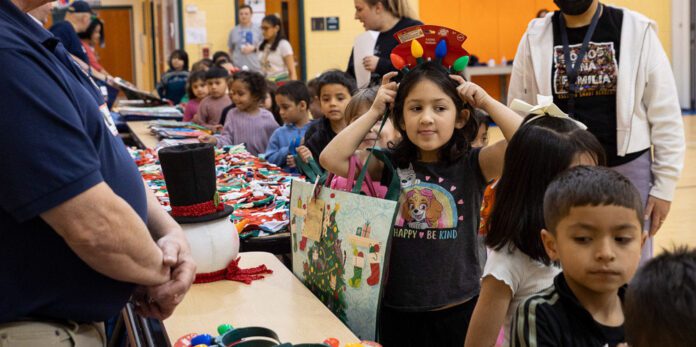

TOLEDO – Changes in weather make for changes in wardrobe, but quickly sprouting kids can easily outgrow clothes from the previous year. As it gets colder, there is a pipeline of organizations at the forefront of providing warm clothes for kids.
“We held our distribution in November, when 904 children passed through our doors, and it [their supply] wasn’t enough,” said Susan Perry, executive director of Susie’s Coats for Kids, about the need in the Toledo area.
Rising to meet the need, Susie’s Coats teamed up with Holland, Ohio company Designetics, which specializes in fluid applicators for manufacturing companies, and their humanitarian arm, Care for Kids, a nonprofit founded in 2020.
Sydney Williams, president of Designetics, said their first year getting Care for Kids up and running included a Trunk or Treat in the fall, but by the next year, “they [the kids] didn’t need candy, they needed coats.”
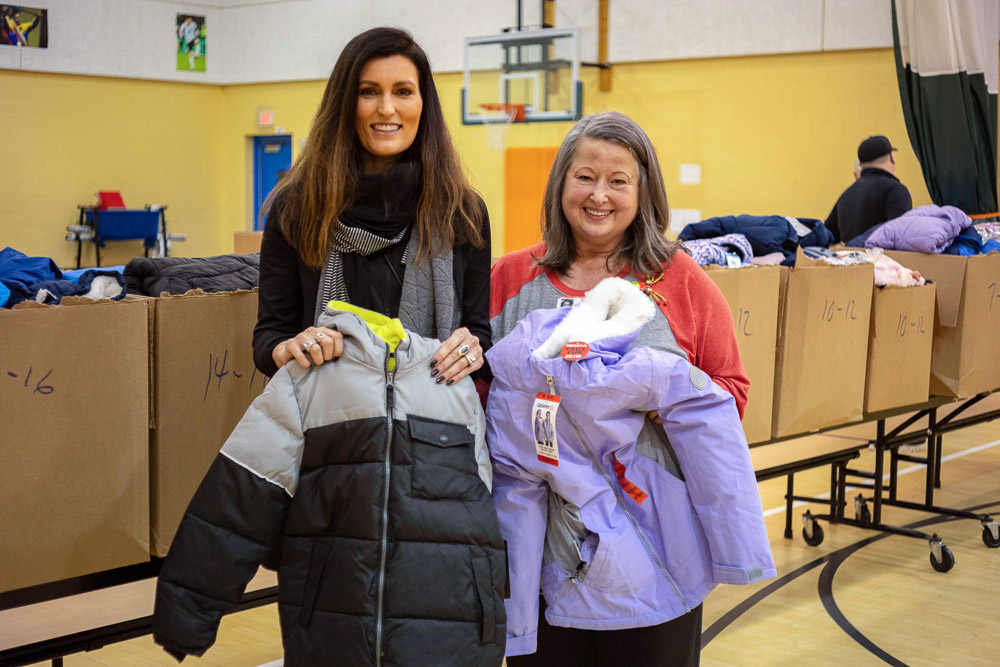



Perry became aware of northwest Ohio’s need to clothe children two decades ago and has worked doggedly to provide more resources to children.
The nonprofit’s main goal is to make sure kids have well-fitting and presentable coats without holes or tears when winter rolls around. Susie’s Coats’ primary storehouse is based in Millbury, but the nonprofit has 35 ‘coat closets’ within a 45-mile radius of Toledo, most of them based in elementary schools.
Perry said her nonprofit has experienced exponential growth since it began, and just last year merged with Hannah’s Socks, who shares a similar goal. Between the two nonprofits, Perry said 224,102 items of warm apparel, including coats, gloves and socks, have been distributed this year.
One distribution site was at Escuela SMART Academy in south Toledo, where Susie’s Coats, Designetics and the Toledo Zoo on Monday handed out winter-wear, along with other holiday items, during the Escuela holiday party.
“We know there’s a big need in our community, and we know it’s cold,” said Martha Ohashi, school nurse for Escuela SMART Academy.
Ohashi reminds teachers to be aware of kids consistently coming to school without warm clothes. “When the child comes into my office [after being recommended by a teacher], I make a call to their home, and I try to connect them to resources,” she said.
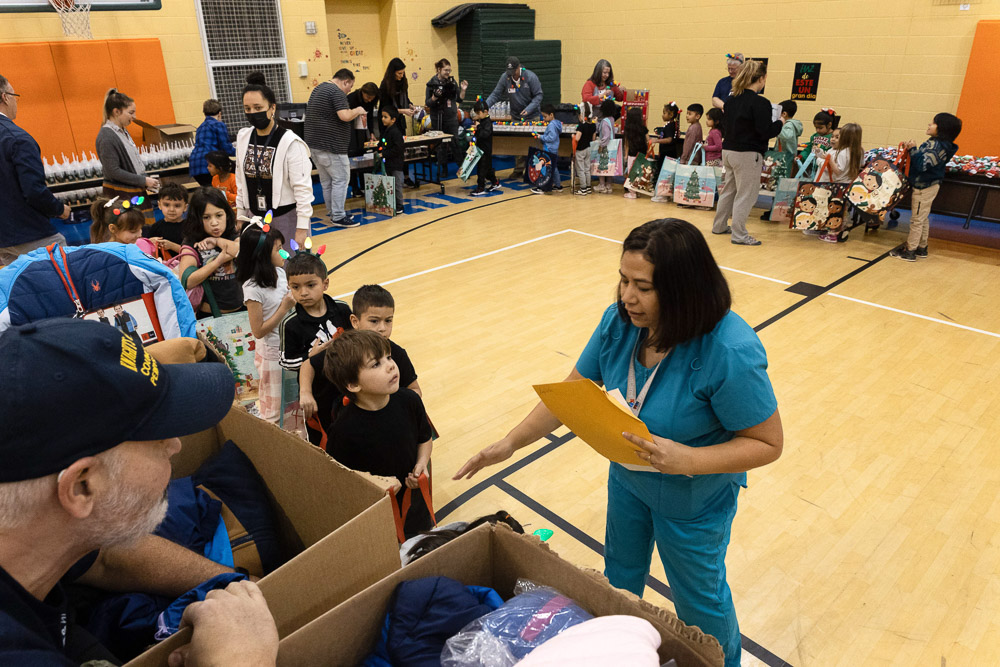

Linda Ruiz-Bringman, assistant superintendent of student, family and community engagement for Toledo Public Schools (TPS), is focused on meeting the needs of children throughout TPS, so that the students can perform well in school.
“The need is great within the Toledo area,” Ruiz-Bringman said. Because of this need, all TPS nurses have essential items on hand, ranging from clothes to hygiene items. “We are always engaging with families. Families will reach out to us and our department.”
The Community Engagement Department deals with a host of different issues, including students lacking food, access to internet, clothing or even basic access to utilities in their homes.
Information from schools and classrooms largely impact how aid gets to children. Perry’s organization has its hands full partnering with nonprofits and businesses to provide items, but relies largely on TPS’s reporting to decide where to distribute items and setup closets.




Natasha Allen, principal of Escuela SMART Academy, is well aware of the needs of her students, and estimated about 180 of her 285 students were in need of coats this year. Over the past four years at the academy, she said there is always a need for coats, and that each year at least half of the students need them.
“We’re just grateful to have them … so our kids can do well,” the principal said, and firmly added that “the students in need of coats are getting coats.”
As students at Escuela filed into the holiday party, grabbed holiday items and colorful socks, nurse Ohashi checked the names of students who needed coats with the size of coat that would fit them. Volunteers from the Perrysburg Knights of Columbus sorted through boxes of warm clothing items, and then handed them to students, who received them with smiles.
“We won’t stop,” Allen said resolutely, adding that the school would find other ways to support their kids if the need increases or the support dries up.
“We support the whole child, and that includes their family,” she said.











